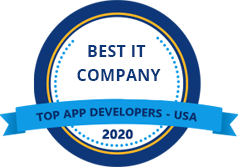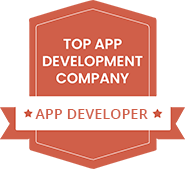
The market for developing food delivery app is expanding quickly due to the rise in demand for accessibility and convenience in the food business. People may now more easily order food from the comfort of their homes thanks to the boom in homes thanks to the boom in the number of food delivery applications in recent years. In addition, restaurants benefit from meal delivery apps since they increase their consumer base and make ordering and delivery easier. There is a substantial possibility for business owners and entrepreneurs to develop their food delivery applications and tap into this expanding market as a result of the industry's ongoing technological developments and growth. This blog aims to provide a thorough instruction guide for people considering the creation of a meal delivery app, covering every step of the procedure from conception to launch.
Background
Although there have been food delivery services for many years, there has been a substantial change in the manner in that food is delivered as a result of the development of technology and the growth of the gig economy. Pizza Delivery introduced the first food delivery service in the 1960s. But it wasn't until the 21st century that the sector experienced substantial expansion. Food delivery services switched from using traditional phone-based ordering to digital platforms. That lets customers easily explore menus, make orders, and track deliveries after the invention of smartphones and mobile apps. The market for food delivery services is extremely competitive nowadays, with many competitors providing delivery services all over the world. The meal delivery market has grown to become a sizable portion of the food service sector, with participants ranging from local businesses to international ones like GrubHub, Uber Eats, and DoorDash. With revenues anticipated to reach $192.8 billion by 2023, the market has experienced a spectacular expansion in recent years.New Trends in Food Delivery Apps
Traditional Restaurants Delivery
Meal kit delivery services have become more popular in the food delivery industry, providing clients with pre-portioned materials and cooking instructions for at-home meals. As clients demand more control over their food choices and ingredients, this kind of service has increased in popularity.The food delivery market focuses on sustainability and reducing food waste.
Many meal delivery apps now provide users with the option of selecting. Eco-friendly packaging and encourage decreasing food waste by offering programs for leftover food donations.Key Features
- User-friendly interface: The app should have an easy layout that makes it easy for users to find what they're looking for and easily place orders.
- Payment choices: To meet the demands of users with diverse preferences, the app should include a range of payment options, including credit/debit cards, mobile wallets, and cash on delivery.
- Delivery Tracking: Customers should be able to track their delivery in real-time, allowing them to see the progress of their order and receive updates on the estimated delivery time.
- Menu management: The software needs to make it simple for restaurants to update prices, add and remove products from their menus, and designate daily specials.
- Push notifications: The app should send push notifications to customers to keep them updated on the status of their order, such as when the order is confirmed, being prepared, and out for delivery.
- Review and rating system: Customers should be able to rate and review their experience with the app, restaurant, and food, allowing for transparency and building trust between customers and restaurants.
- Support in-app: To handle any queries or issues users may have, the app should offer choices for in-app assistance such as live chat and phone support.
- Integration with restaurant systems: To enable seamless and effective order processing, the app should be integrated with the restaurant's point of sale (POS) and inventory management systems.
Owner
- Marketing Automation: A suite of tools to automate and streamline marketing efforts, such as email campaigns and social media posting
- Multilingual Support: support for several languages, which enables you to reach a larger worldwide audience.
- Analytics Dashboard: A visual display that monitors user activity and app usage and supports data-driven decision-making.
- Integration with Business Tools: Workflow can be streamlined by integrating with frequently used business tools like accounting and invoicing software.
- Data backup and recovery: A reliable backup and recovery solution is required to guarantee the security of app data and its ability to be restored in the case of a problem.
- Personalization: The ability to customize an app to a user's preferences and usage patterns in order to enhance the user experience.
- Location-Based Services: accessibility to location-based services, such as maps and local search, to boost user engagement.
- Content Management System: To manage and change the content of the app, use an intuitive content management system.
- Automated Workflows: Automated workflows simplify procedures like order fulfillment and payment processing.
Owner Dashboard
User Management: the potential to create, edit, delete, and set permissions for users. Financial tracking: keep track of sales, costs, and earnings. Activity tracking: observe user behavior and monitor interest. Reporting and analytics: create reports and examine information. Inventory Management: tally sales, orders, and stock levels. Tools for collaboration: tools for teamwork and communication like chat, forums, and shared calendars. Customization: the ability to adapt the dashboard to particular business requirementsDevelopment Process
The following are the steps in developing a food delivery app:- Planning: describing the app's features and functionality, as well as the target audience and goals.
- Market research: examining market dynamics and client requirements to find possibilities for differentiation.
- Design: creating the app's aesthetic appearance and feel, as well as developing a user-friendly interface.
- Development: creating the backend framework, integrating payment systems, and writing code.
- Testing: carrying out various testing techniques, including functional, performance, and user acceptance testing, to find and fix faults and other problems.
- Launch: designing a marketing and promotion strategy, publishing the app on the app stores, and gathering user reviews.
- Maintenance: monitoring the app's functionality, resolving any problems that occur, and updating the app to stay updated on technological advancements and user requirements.
- Integrating Maps and GPS: Use GPS and mapping technologies to help clients find restaurants and monitor the status of their deliveries.
- Payment Processing: Establish a safe payment system with options for cashless transactions so that clients can pay for their orders.
- Building an Admin Panel: establishing a web-based interface for delivery drivers and restaurant owners to handle their side of the company, including managing delivery routes, tracking orders, and modifying menus.
- Implementing Marketing Strategies: Developing marketing plans for social media marketing, email marketing, and referral schemes to draw in and keep clients.
- Integrating Customer Feedback: gathering and examining user comments to enhance the app continuously and guarantee user satisfaction.
- Growing the Company: preparing the infrastructure and the app for expansion, which includes adding additional eateries, expanding into new regions, and creating new features to satisfy evolving client demands.
Technology Stack
A food delivery app typically uses the following technology stack: The app's user interface is created using React Native, Flutter, or native iOS/Android programming (Java/Kotlin for Android and Swift/Objective-C for iOS).Backend:
The server side of the project is constructed using a backend service like Node.js, Ruby on Rails, Django, or Laravel. This service is in charge of processing data, interacting with databases, and responding to requests from the front end.Databases:
A relational database such as MySQL, PostgreSQL, or Oracle. Or a NoSQL database such as MongoDB or Cassandra, is used to store data such as users, orders, and restaurant information.Cloud Services:
The backend and database are hosted using cloud services like Amazon Web Services (AWS), Google Cloud Platform (GCP), or Microsoft Azure.Payment Processing:
Payment gateways such as Stripe, PayPal, or Square handle transactions and process payments. The success of a meal delivery software project depends on selecting the appropriate technology stack. The correct tools can enhance an app's usability, performance, and scalability while reducing development expenses. The cost, performance, security, and scalability of the tools, as well as the accessibility of developers with the appropriate expertise to use them, are factors to take into account when selecting a technology stack.Marketing
Marketing and promoting a food delivery app effectively can help to increase customer acquisition and drive growth. Here are several strategies that can be used:Digital marketing:
To attract potential clients and increase traffic to your app. Make use of digital marketing channels like social media, search engine optimization (SEO), and search engine marketing (SEM).Referral programs:
Provide rewards to current users who suggest others to your app. This can increase your consumer base and generate word-of-mouth recommendations.Affiliate marketing:
Partner with other businesses, such as bloggers and websites, to promote your app to their audience in exchange for a referral fee or commission.Content marketing:
In order to inform potential users about your app and its capabilities. Provide informative and interesting material, such as blog posts, infographics, and video tutorials.Public relations:
Make use of public relations strategies to improve visibility and establish credibility with potential clients. Such as press releases and media outreach.Email marketing:
Use email marketing to provide personalized and targeted messages, including promotions and special offers, to both current and future customers.Community building:
By providing a forum or social network group where users can join. And discuss their experiences, you can create a community around your software. This could improve customer involvement and build a sense of community.Future of Food Delivery App
The future of food delivery is predicted to be shaped by a number of developments in addition to the current trends. The growing need for quick and convenient meal delivery choices has led to the continuous expansion of the food delivery sector. In recent years, it has experienced significant growth as a result. In the food delivery sector, some recent trends include:- Increased use of machine learning and artificial intelligence (AI) technologies for real-time updates, personalized recommendations, and increased operational effectiveness.
- Expansion of delivery services beyond food from restaurants to include household goods, alcohol, and groceries.
- The emergence of virtual cafes or cloud kitchens that focus on delivery-only services.
- The growth of dark kitchens, where food is prepared specifically for delivery, with no dine-in option.
- The usage of autonomous vehicles and drones for delivery is projected to grow in the coming years.
- The integration of contactless delivery options to maintain hygiene and safety during the pandemic.
- Increased attention was paid to sustainability, with a focus on waste reduction, the use of eco-friendly packaging, and the availability of plant-based food options.












